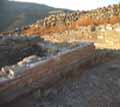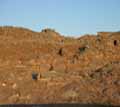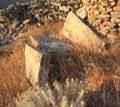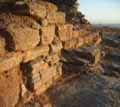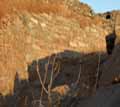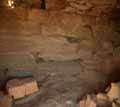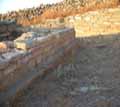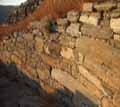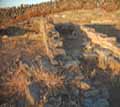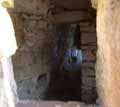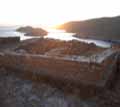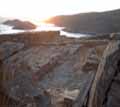
In the NW part of Kythnos is its ancient capital, Vryokastro. The city, which is estimated to have covered an area of about 300 acres, was inhabited from the 10th century. BC until the beginning of the 7th c. AD, when it was abandoned by the inhabitants who moved to the Castle. Even today we can see parts of the walls that surrounded the city, some of which are excellently preserved. On the plateau formed along the ridge, two rectangular buildings are preserved. In 2001, another Sanctuary was found on the northern edge of the plateau. The temple, which was found to the north of the long narrow altar, has probably collapsed due to an earthquake, but the sanctuary was found undisturbed, with all the offerings in place. About 1500 valuable objects (such as jewelry and vases) of gold, silver, copper, ivory, vitreous, coral and semi-precious stones. The initial conclusion that emerged from the findings about the identity of the deity to which the temple was dedicated, is that it was a female deity. According to recent scientific conclusions, from a vessel found, which is called a kernos (or floodgate) and for which it is not clear if it was used ritually or if it was simply assigned to the sanctuary, it leads to the conclusion that the sanctuary was dedicated to the goddess Demeter . The use of this ritual Eleusinian vessel (characteristic of the Eleusinian mysteries) is rare outside of Attica. In addition, the existing epigraphic evidence indicates relations between the sanctuary of Demeter in Eleusis and Kythnos. The collection of rent from a holy mosque in Kythnos during the period 421/0-408/7 BC. documents the aspirations of the sanctuary of Eleusis towards the rich and metal-bearing island during the difficult fiscal period for the Athenian state, during the Peloponnesian War. With the continuation of the excavations, another altar was revealed in the surrounding area of the sanctuary.
Editor: Fotini Anastasopoulou











